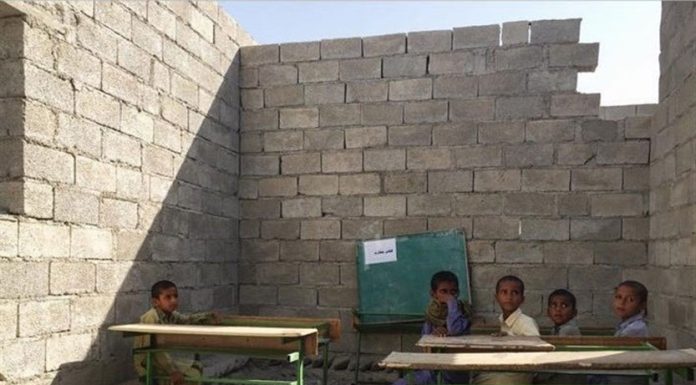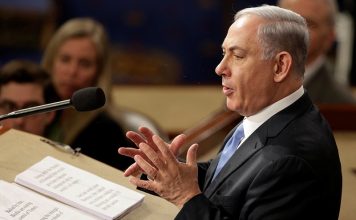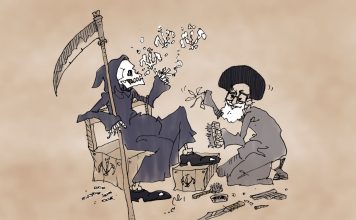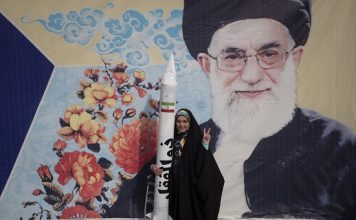By Kayhan Life Staff
Hamidreza Khan-Mohammadi, Iran’s Deputy Education Minister for Development, recently warned that nearly 19 percent of all the schools in the country are in a state of disrepair, adding that the buildings needed to be reinforced or demolished and rebuilt.
“Some 104,000 classrooms violate building regulations,” Mr. Khan-Mohammadi said.
Khan-Mohammadi, who is also the director of the office for school renovation, made the comments in an interview with the Iranian Labor News Agency (ILNA) on Jan. 31
Despite a repeated plea to repair, renovate, and to rebuild the country’s schools in line with building regulations and health and safety guidelines in the last decade, the Ministry of Education has yet to offer a comprehensive plan to address the problem.
According to Khan-Mohammadi, builders consult the Education Ministry about specific issues, including the number of stairs needed to accommodate students exiting the building.
“However, the Education Ministry does not supervise the design and construction of the schools, and that is why we cannot closely monitor the changes made to school buildings,” Khan-Mohammadi argued.
“Any changes made to a school building must be reported to the Education Ministry, whose duty is to investigate the matter immediately,” Khan-Mohammadi explained. “For instance, emergency staircases should not block the exits.”
“Classroom and external doors should open outward,” Khan-Mohammadi noted. “We must pay attention to such details that align with building regulations. Schools have heeded our warnings about using gas in classrooms in line with health and safety guidelines.”
“Older schools are less likely to comply with the building standards,” Khan-Mohammadi said. “However, some old schools have adhered to the current building regulations and, as a result, are in a better shape than some newer ones. For instance, we have renovated and reinforced the Shaheed Modares High school building [in Tehran].”
“We also reinforced and renovated an old primary school in the Harandi neighborhood [of Tehran],” Khan-Mohammadi noted. “These old schools have historical significance, which is why we reinforce and renovate them.”
Two weeks earlier, Khan-Mohammadi had warned about the sub-standard heating system in 35,000 school classrooms across Iran.
In comments reported by the Taadol online newspaper on Jan. 16, Khan-Mohammadi said: “After two years of closures caused by the Coronavirus [pandemic], our schools have reopened. We have taken measures to provide heating to schools, especially in the cold regions.”
“Heating systems in 91 percent of classrooms are up to the current standards,” Khan-Mohammadi explained. “The remaining [9 percent] pose a challenge to us. There are no kerosene or non-standard heaters in those classrooms.”
“There could be some 49,000 classrooms with direct-fired heaters, which are not up to our standards,” Khan-Mohammadi said. “We must use central heating or gas heaters or split [heating-cooling] systems in these classrooms.”
There is a widespread shortage of classrooms and schools in most Iranian provinces. There are also safety concerns about the dilapidated school buildings, which pose a health threat to teachers and students.
For instance, the southeastern province of Sistan and Baluchestan desperately needs classrooms. Outdoor and portable classrooms pose serious problems for teachers and students.
Many students in Sistan and Baluchestan must walk kilometers to neighboring villages and towns to attend schools. The absence of schools has forced many students to drop out, especially girls.
In comments reported by the Iranian Students News Agency (ISNA), the governor of Sistan and Baluchestan Province, Modarres Khiabani, said: “There is a shortage of 18,000 classrooms in the province. We need to build 2,000 classrooms in Sistan and Baluchestan every year. There must be a concerted effort to build schools in the province; otherwise, we will face a crisis.”
In comments reported by the Tehran-based Tasnim news agency on May. 10, 2022, Meysam Lakzaei, the director of the Sistan and Baluchistan office for school renovation, said the province needed to build at least 1,000 classrooms annually to accommodate the growing number of students.
Economically disadvantaged regions, such as Sistan and Baluchestan, face a severe shortage of classrooms.
The northern province of Tehran needs 30,000 new classrooms to accommodate the rising number of students, according to Shokrollah Hassanbeigi, deputy governor of Tehran Province in charge of political and social affairs.
Government Security Forces Fire Tear Gas Near Tehran School After Dispute
Iranian Schoolgirl Killed After Tearing Khomeini Picture Out of Book, Rights Group Says
The central province of Isfahan has a shortage of 3,000 classrooms.
Also, some school buildings have been damaged because of subsidence and do not meet health and safety requirements.
According to Majid Nasimi, the director of the office for the school renovation of Isfahan, subsidence has damaged 34 schools in the province.
In comments reported by the Isfahan-based Imana news agency on Sept. 6, 2022, Mr. Nasimi said: “The province needs nearly $10 million to reinforce the foundations (measuring 40,545 square meters) of 34 schools with 356 classrooms.”
“Recent findings by building surveyors have shown that there are 10,000 classrooms, built 40 years ago, that are still in use in the province,” Nasimi explained. “They form 30 percent of our schools, and their construction did not follow any specific [building] standard.”
“The survey found 3,000 dilapidated classrooms needing immediate repair,” Nasimi added. “We need the help of the government and the Charity for School Construction to renovate these classrooms.”












